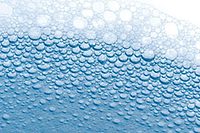Marine Coatings, Biocides, and Environmental Regulations

The single largest operating cost for commercial ships is fuel, and one of the most creative ways to conserve fuel – and to save money – is to use the right kind of coating on the hull of your ship.
How does the right paint enable a ship to use less fuel? Ships’ hulls attract marine life like barnacles, mollusks, and tubeworms, as well as plant life like algae and weeds. As these organisms accumulate on a ship’s hull, friction and drag increase, and the ship has to burn more and more fuel to maintain speed.
A fouled ship has to deal with steadily increasing fuel costs, slower speeds, and a corroded, damaged hull. And it’s difficult and costly to remove these organisms from a ship’s hull, once they’re lodged there; the cement a barnacle secretes to fix itself to a hull is one of the strongest adhesives in the natural world.
A penny of prevention is worth a dollar of cure. That’s where antifouling coatings come in.
Antifouling coatings repel marine life from a ship’s hull, preventing them from attaching themselves in the first place. They do this in two primary ways: ultra-smooth coatings are so slick that barnacles and other marine life can’t bond to it, and biocides kill intrusive marine life.
Both have their unique advantages, but some coatings have been the subject of significant controversy in recent years, and have even been banned. Decision makers need to stay updated on the latest coating debates; how we apply these coatings is as important as what coatings we apply. Applying an antifouling coating to a commercial ship is an expensive, labor-intensive process, so getting it right the first time is imperative.
Environmental Red Flags
For many years, tin-based antifouling biocidal coatings were the industry standard. These tin-based coatings were applied to the bottom of ships all over the world, and were extremely effective at reducing fouling.
Unfortunately, researchers found that the tin compound, called TBT, leached into the environment, and had adverse effects on many non-target organisms, including whales, sea otters, and even humans.
As TBT was banned around the world, the industry moved towards copper-based biocidal antifouling coatings, such as epoxy paint containing pure copper powder. But these, too, were soon revealed to be environmentally problematic.
Scientists in San Diego, California, found that copper from antifouling coatings was accumulating in a local yacht basin at levels that exceeded safety limits laid out in the Clean Water Act. A state senator introduced a bill in 2011 that would have banned all copper-based coatings in California, but the bill failed to pass into law. Then, in 2018, the California Department of Pesticide Regulation put forth a new law that capped the leach rate (basically, how fast a substance enters the water) on copper antifouling paints.
Washington State soon followed suit after discovering high levels of copper in Puget Sound, passing a law that banned copper-based bottom paints in Washington.
However, enforcement of that ban has been repeatedly delayed, as experts study viable alternatives; currently, the Washington ban isn’t scheduled to fully take effect until at least 2026.
Still, the writing is on the wall for antifouling coatings that leach and accumulate in waters, with many experts predicting that a federal ban is in the works. In the meantime, the coatings industry has been working hard to create eco-friendly coatings, with mixed results.
Many Paths Forward
One popular alternative antifouling compound, cybutryne, was found to be even more toxic than the tin-based compound it replaced, and a global ban went into effect at the beginning of this year.
Ultrasonic antifouling systems, which use high-frequency sounds to repel marine life, and have been touted as environmentally safe alternatives to toxic paints, were discovered to be harmful to marine mammals.
There have been success stories, too. A Swedish company, I-Tech AB, invented a pharmaceutical antifouling coating called Selektope that uses a molecule called medetomidine to repel barnacles.
The molecule overstimulates a barnacle larva’s neuro-receptors, forcing it to swim away from the ship. However, when the larva leaves the effective area of the coating, the effect stops, and there’s no permanent damage. And medetomidine quickly degrades in water, and doesn’t bioaccumulate. A similarly novel antifouling coating uses a bacteria harvested from a volcano to create a non-toxic but highly effective repulsion effect.
Another promising area of innovation is the use of ultra-smooth hydrophobic coatings. These silicone-based coatings have such low surface tension that marine life can’t fully attach themselves to the hull.
This type of coating doesn’t leach into surrounding waters at all, so there are no contamination worries. The only drawback is that they require the ship to achieve a certain speed to slough off the loosely accumulated marine life, making them less effective during long dockings. Similarly, new Teflon-based coatings present a hyper-smooth surface that both lower hull friction, and repeal marine life. The upside of these coatings is that they’re so smooth that they actually enhance a boat’s ability to move through the water, effectively increasing speed; the downside is that, like silicone-based coatings, they require speed and movement to be effective.
Consult a Professional to Find the Right Coating for You
With such a fluid regulatory environment, and so many emerging antifouling technologies, it can be hard to settle on the proper coating for your situation. Consult a coatings professional to learn which marine coatings are right for your fleet – and which to avoid.
Looking for a reprint of this article?
From high-res PDFs to custom plaques, order your copy today!









